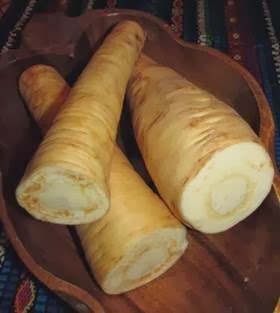PARSNIPS
Parsnips are what I like to call a member of the underground veggie crowd, aka tubers. While they are most closely related to carrots, in the way they can be prepped and eaten they make me think of potatoes, probably because their skin and flesh are cream-colored.
Parsnips are native to Eurasia and were cultivated by early civilizations like the Romans. The ancient Romans considered them an aphrodisiac but in modern times they serve more often as fodder for livestock.
In the 1500s in Germany, parsnips were a common pantry staple, from there they made their way to England sometime in the 1600s, and via the English colonists, the veggie found its way to the new world where it was cultivated in the northeast.
Before the introduction of cane sugar to Europe, parsnips were used as a sweetened. This may have to do with fact that if left in the ground after they have matured, parsnips will become sweeter. And their sweet taste is heightened through cooking.
Parsnips can be eaten raw, but are usually cooked. They can be baked, boiled, roasted, steamed, pureed or fried. While the root is quite edible, you need to take care in handling the shoots and leaves. Both parts of the veggie contain a toxic sap that can be hazardous and cause a rash. Fortunately, when you buy them in the grocery store (at least the ones I've seen), they have already been stripped down and all you are buying the ready-to-prep root.
Are they good and good for you? Not to the extend that other foods I've featured are, BUT they are high in some vitamins and minerals, in particular potassium. They also contain antioxidants as well as both types of fiber, soluble and insoluble. They are a great addition to any stew and in many English-speaking countries, roast parsnips are an essential part of any Christmas dinner.
I've used them in soup before, and they are great in stews too. I have seen them roasted up with carrots, potatoes and onions, but the idea of frying them is new to me so will be trying that out for you next.


0 comments:
Post a Comment